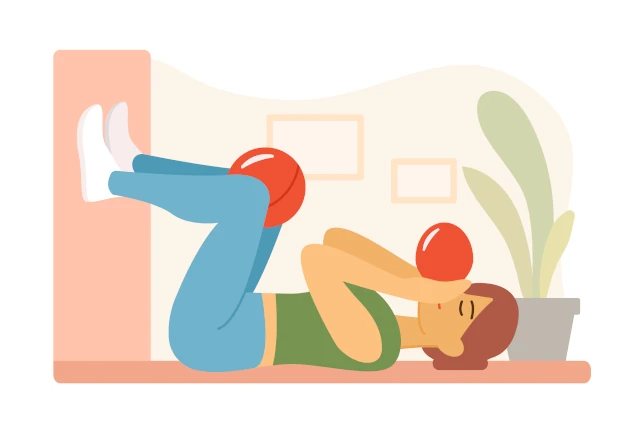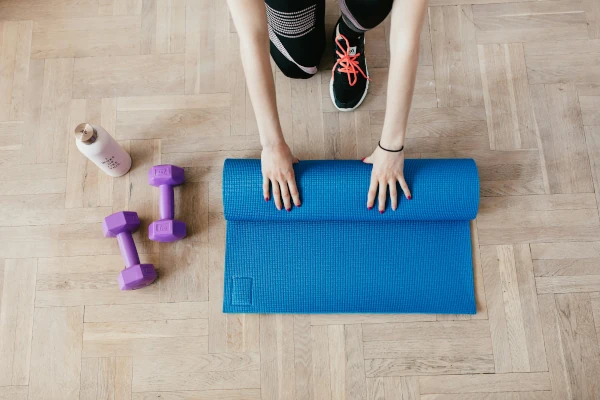
The Benefits of Kegel Exercises: Strengthen Your Pelvic Floor for Better Health
- Dr. Kirti (MPT)
Connect with our expert physiotherapist for personalized physiotherapy advice.
Kegel exercises are simple yet powerful movements designed to strengthen the pelvic floor muscles. Named after Dr. Arnold Kegel, who first popularized them in the 1940s, these exercises offer a range of health benefits for both men and women. In this article, we’ll dive into the benefits of Kegel exercises, why they’re essential for pelvic health, and how to perform them correctly.
What Are Kegel Exercises?
Kegel exercises involve contracting and relaxing the muscles that form the pelvic floor, which supports the bladder, uterus (in women), and rectum. Regularly performing Kegels can help improve muscle tone and prevent issues related to a weak pelvic floor.
Top Benefits of Kegel Exercises
Kegel exercises can be beneficial for various health conditions and can significantly improve quality of life. Here are some of the top benefits:
- Improved Bladder Control
One of the primary benefits of Kegel exercises is the improvement in bladder control. Strengthening the pelvic floor muscles helps reduce symptoms of urinary incontinence, which is common after childbirth, surgery, or due to aging. Kegels can be particularly effective for managing:
- Stress incontinence:
Leakage during activities like coughing, sneezing, or lifting.
- Urge incontinence:
Sudden and intense urges to urinate.
- Stress incontinence:
- Enhanced Sexual Health and Satisfaction
Strong pelvic floor muscles can lead to improved sexual function for both men and women. Kegel exercises can help:
- Increase sexual pleasure:
Stronger muscles can enhance arousal and lead to more intense orgasms.
- Address erectile dysfunction:
In men, pelvic floor exercises can help with erection strength and stamina.
- Reduce vaginal discomfort:
In women, Kegels can alleviate discomfort during intercourse.
- Increase sexual pleasure:
- Support During Pregnancy
For pregnant women, Kegel exercises can be highly beneficial in:
- Strengthening pelvic floor muscles:
This can help support the weight of a growing baby and reduce the risk of pelvic organ prolapse.
- Preparing for childbirth:
Toned pelvic floor muscles may make labor easier and recovery quicker.
- Reducing pregnancy-related incontinence:
Performing Kegels regularly can help manage bladder leaks during pregnancy.
- Strengthening pelvic floor muscles:
- Postpartum Recovery
After giving birth, many women experience weakened pelvic floor muscles, leading to issues like urinary incontinence or pelvic organ prolapse. Kegel exercises can aid in:
- Accelerating recovery:
Strengthening the pelvic floor muscles can help women regain muscle tone faster.
- Preventing complications:
Regular exercises can reduce the risk of long-term issues related to pelvic floor dysfunction.
- Accelerating recovery:
Prevention and Treatment of Pelvic Organ Prolapse
Pelvic organ prolapse occurs when the muscles and tissues supporting the pelvic organs weaken, causing them to slip out of place. Kegel exercises can:
- Strengthen pelvic support:
Regularly practicing Kegels helps maintain muscle strength and prevent prolapse.
- Reduce symptoms:
If prolapse has already occurred, Kegels can alleviate discomfort and improve muscle support.
- Bowel Control
Kegel exercises are also helpful for individuals experiencing fecal incontinence. Strengthening the pelvic floor muscles can improve control over bowel movements and reduce the risk of leakage.
How to Perform Kegel Exercises Correctly
To reap the benefits of Kegel exercises, it is essential to perform them correctly. Follow these steps:
- Identify the right muscles:
To find your pelvic floor muscles, try stopping the flow of urine midstream. The muscles used for this action are your pelvic floor muscles.
- Get comfortable:
You can perform Kegels lying down, sitting, or standing. Choose a position that feels most comfortable for you.
- Contract the muscles:
Squeeze the pelvic floor muscles and hold for 3-5 seconds, then relax for an equal amount of time.
- Repeat:
Aim for 3 sets of 10-15 repetitions daily. Gradually increase the hold time as your muscles get stronger.
Tips for Success:
Avoid using abdominal, thigh, or buttock muscles while performing Kegels.
Breathe normally throughout the exercise and avoid holding your breath.
Do not perform Kegels while urinating, as this can lead to incomplete bladder emptying.
Who Should Do Kegel Exercises?
Kegel exercises are beneficial for:
- Women during and after pregnancy:
To support the pelvic floor and aid recovery.
- Men experiencing urinary incontinence or erectile dysfunction:
To strengthen pelvic support.
- Older adults:
To maintain pelvic health and manage symptoms of incontinence.
- Individuals with a sedentary lifestyle:
To improve muscle tone and prevent weakness.
Common Mistakes to Avoid
When practicing Kegel exercises, avoid the following mistakes:
- Using the wrong muscles:
Make sure you are engaging the pelvic floor muscles, not your abs or thighs.
- Overdoing it:
More is not always better. Excessive Kegels can cause muscle fatigue and discomfort.
- Inconsistent practice:
Consistency is key to seeing the benefits, so make it a daily habit.
Conclusion
Kegel exercises offer numerous benefits for men and women, from improving bladder control to enhancing sexual health. They are a simple, effective way to strengthen the pelvic floor muscles, support pregnancy and postpartum recovery, and prevent pelvic health issues. Start incorporating Kegel exercises into your daily routine to enjoy a healthier, stronger pelvic floor.
FAQs
- Q1: How long does it take to see results from Kegel exercises?
Results vary, but most people notice an improvement in pelvic muscle strength within 4-6 weeks of consistent practice.
- Q2: Can men benefit from Kegel exercises?
Absolutely. Kegel exercises help men with urinary incontinence, bowel control, and even erectile dysfunction.
- Q3: How many times a day should I do Kegel exercises?
Aim for at least 3 sets of 10-15 repetitions daily for best results.
Incorporating Kegel exercises into your routine can make a significant difference in your pelvic health. Whether you are recovering from childbirth, dealing with incontinence, or simply looking to enhance your sexual health, these exercises are a valuable addition to your daily wellness habits.
Connect with our expert physiotherapist for personalized physiotherapy advice.



